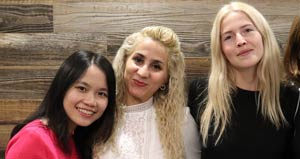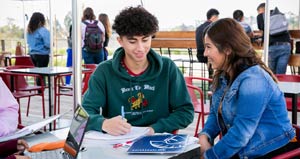
Flip your Classroom, Flip your Teaching Style
By Professor Evelin Suij-Ojeda
I always knew I wanted to be a teacher so I was always observing my instructors and would often ask them why they would use certain strategies (yes, I was THAT annoying kid!). One particular memory from my history class remains coming back over and over again: the teacher would first ask a few questions about the topic she was about to teach, and no one even made an attempt to answer; we did not know anything about Venezuelan history during colonial times! Then, she would make us read in silence most of the session, and only at the end (maybe 20 minutes before the bell set us free) she would attempt to start an activity for us to remember what we had just been reading.
One day, I took the courage to ask my professor: why don’t you send these readings home and then, we come back with prior knowledge and can use this time to discuss and go deeper to what was read? Of course, advice coming from a 15-year old girl was not taken seriously, and the professor only replied that if she did that, students would take it as if she wasn’t teaching at all. Now I understand: flipping the common instructional approach was not part of a teacher’s job at that time. Well, I don’t blame her now. 25 years ago, that is how it was done; the teaching and learning was done within classroom walls and students had little time to discuss and practice what had been learned. Results from my five years of history classes with the very same professor? I do not remember anything from those sessions! I did not have time to prepare, to reflect, or even understand what was being explained.

Little did I know that, opposed to traditional learning, what I thought might work in my high school history classes was called the “flipped classroom model.”
Flipped classroom is a “pedagogical approach in which direct instruction moves from the group learning space to the individual learning space, and the resulting group space is transformed into a dynamic, interactive learning environment where the educator guides students as they apply concepts and engage creatively in the subject matter” (The Flipped Learning Network, 2014).
There are plenty of advantages to using the flipped classroom model in your classes. First of all, in traditional learning, considering Bloom’s Taxonomy, lower level of learning such as remembering and understanding is what takes place in the classroom. Then, students are supposed to work on activities that involve higher level of learning outside school, without formal supervision or help.

Second, in the flipped classroom model, learning is flipped (Yes!, it is as fun as it sounds!). By using this model, we make sure students are able to complete the lower level of cognitive work before class. Then, when they come to the lesson, they can engage in higher cognitive levels of learning with peers and teacher, apart from coming to the classroom with enough knowledge to make positive and insightful contributions to the conversations taking place.
Also, if any doubt arises during the readings or activities prior to the actual class taking place, there is enough time in the class slot for discussion and clarification if needed.
Other benefits to mention are the fact that this model helps struggling students, giving them enough time to prepare for the class, thus boosting their self-esteem when participating in class. It increases student talking time, engagement and student-teacher interaction as well.

To sum up, extending learning beyond class through individual and collaborative practice is the perfect way to make sure your students can make connections between inside and outside learning while they benefit from the opportunity to apply concepts under their instructors’ expert guidance in the classroom.
Do you need to flip your classes, no matter what course you teach? Not really. That depends on what works best for you and your students, their needs and desired learning outcomes. You are the expert in your classroom, you know what your students need. If not, ask them. It is always a good idea to involve students in their own learning process.
For more resources and ideas for using the flipped classroom model in your class, please visit:
Our 6 Favorite Flipped Classroom Resources
12 Resources on Flipped Learning
4 Tools for a Flipped Classroom
Best Apps and Websites for the Flipped Classroom
40 Flipped Classroom Tools For Teachers And Students
Flipped Learning Network (FLN). (2014) The Four Pillars of F-L-I-P™
All images from Pixabay






